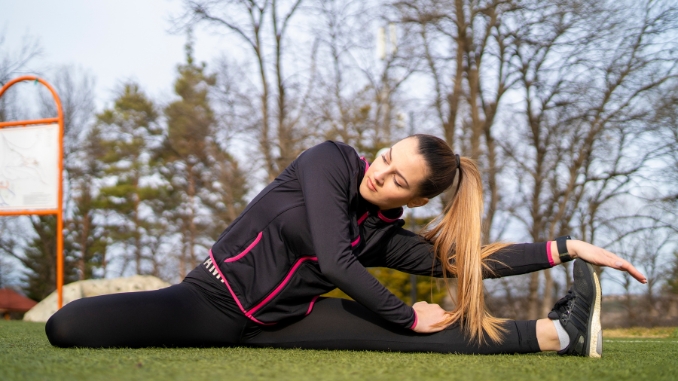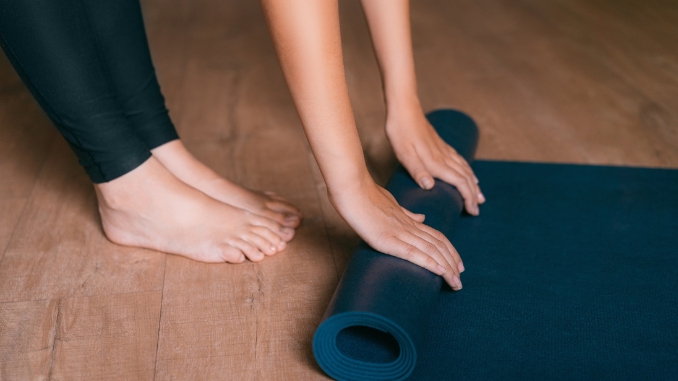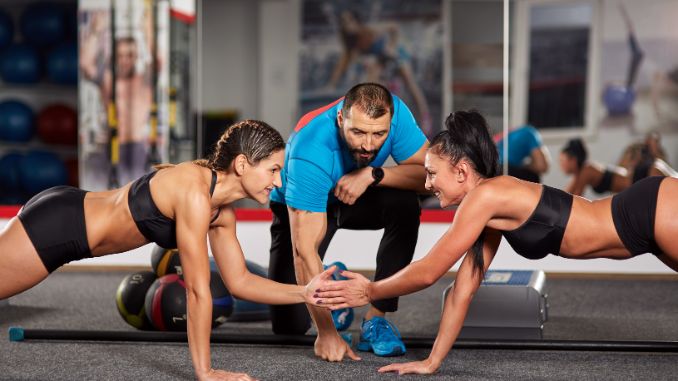
Are you tired of doing the same workout every week? Trust me, I’ve been there. It’s like being stuck on repeat—not the fun kind, like your favorite song, but more like a never-ending loop of chores. That’s where cross-training workouts come to the rescue! They’re exciting, challenging, and designed to keep your body guessing (in the best way possible) while they improve performance by incorporating diverse exercise routines.
Ready to spice things up? Let’s explore 11 workouts that will level up your fitness, no matter where you start.
What is Cross Training?

Physical activity [²], such as cross-training workouts, is like the Swiss Army knife of fitness—it combines different exercises to improve strength, endurance, flexibility, and overall fitness. By incorporating diverse movements, you target multiple muscle groups, keep workouts fresh, and reduce the risk of injuries caused by overuse.
Whether you’re a beginner, intermediate, or advanced fitness enthusiast, these workouts will help you build strength, burn calories, and have a blast. But first, let’s talk about why cross-training workouts is such a game-changer.
Now that you have a sneak peek let’s dive into why cross-training is a must-have in your fitness journey.
Sneak Peek: 11 Cross-Training Workouts
Here’s a quick preview of the workouts we’ll break down later:
- Bodyweight Row
- Touch Jump
- Dumbbell Swings
- Plank Shoulder Taps
- Jumping Pull-Up
- Burpee Variation
- One-Arm Swings
- Weighted Step-Ups
- Full Pull-Up
- Chest-to-Ground Burpees
- Dumbbell Thrusters
Beginner Workouts
1. Bodyweight Row
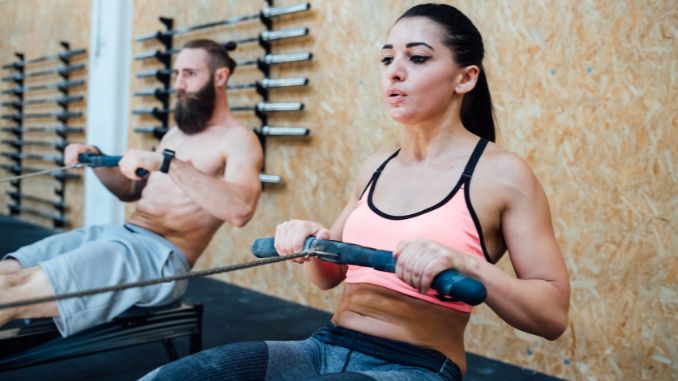
- Begin in an upright standing position in front of a TRX with your feet shoulder-width apart, maintaining good alignment with your head, shoulders, hips, and legs.
- Hold the handle with each hand at chest height. Step forward slightly to increase the angle of your body.
- Engage your core then pull your body toward your hands by bending your elbows and keeping your upper arms close to your sides.
- Pause briefly at the top, then slowly reverse the movement to return to the starting inclined position.
- Repeat the movement for the desired number of repetitions.
2. Touch Jump

- Begin in an upright standing position with your feet shoulder-width apart, maintaining proper alignment in your head, shoulders, hips, and legs.
- Engage your core, bend your knees, and hinge at your hips to lower your hands toward the ground.
- Touch the ground with both hands, then push through your feet to return to standing.
- As you rise, lift your arms overhead and jump at the top.
- Land softly with your knees slightly bent and repeat the movement for the desired number of repetitions.
3. Dumbbell Swings

- Begin in an upright standing position with your feet slightly wider than shoulder-width apart.
- Hold a dumbbell or kettlebell in front of your body with both hands.
- Maintain good alignment in your head, shoulders, hips, and legs, and engage your core.
- Hinge at your hips and bend your knees as you swing the weight backward between your legs.
- Then, thrust your hips forward powerfully to return to a standing position, using the momentum to swing the weight upward to about head height.
- Allow the weight to naturally swing back down as you hinge your hips to repeat the movement.
4. Plank Shoulder Taps

- Begin in a straight-arm plank position with your hands directly beneath your shoulders and your feet hip-width apart.
- Maintain a straight line from your head to your heels, keeping your core engaged and hips level.
- Lift your right hand and tap your left shoulder while minimizing twisting or movement in your hips.
- Return your right hand to the starting position and repeat the movement with your left hand, tapping your right shoulder.
- Continue alternating sides for the desired number of repetitions.
5. Air Squats

- Begin in an upright standing position with your feet slightly wider than shoulder-width apart.
- Maintaining good alignment with your head, shoulders, hips, and legs.
- Engage your core, push your hips back, and bend your knees to lower your body into a squat position, keeping your chest lifted and your weight evenly distributed on your heels.
- Lower yourself until your thighs are parallel to the ground or as far as your mobility allows. Push through your heels to return to standing.
- Repeat the movement for the desired number of repetitions.
Intermediate Workouts
6. Jumping Pull-Up

- Begin by positioning your rings overhead or using a pull-up bar.
- Stand below the bar with your hands shoulder-width apart, palms facing inward, and grip the bar firmly.
- Engage your core and maintain proper alignment in your head, shoulders, and hips. Jump upward, using your legs to assist as you pull your body toward the bar.
- Aim to bring your hands to head height while keeping control of the movement.
- Pause briefly at the top, then slowly lower your body back to the starting position over a count of three seconds.
- Repeat the movement for the desired number of repetitions.
7. Burpee Variation

- Begin in an upright standing position with your feet shoulder-width apart, maintaining good alignment in your head, shoulders, hips, and legs.
- Engage your core, bend your knees, and hinge at your hips to lower your hands.
- Jump back with both feet into a straight-arm plank position, keeping your body aligned.
- Hop forward with both feet to return to the starting position, then jump up, raising both arms overhead.
- Repeat the sequence for the desired number of repetitions.
8. One-Arm Swings

- Begin in an upright standing position with your feet slightly wider than shoulder-width apart.
- Hold a dumbbell or kettlebell in one hand, keeping it in front of your body.
- Engage your core, hinge at your hips, and bend your knees as you swing the weight backward between your legs.
- Thrust your hips forward powerfully to return to a standing position, using the momentum to swing the weight upward to head height.
- Lower the weight naturally as you hinge your hips to repeat the movement. Perform five repetitions, then switch to the opposite hand and repeat.
9. Advanced Workouts for Full Body Strength

- Begin in an upright standing position under a pull-up bar with your feet shoulder-width apart, maintaining good alignment in your head, shoulders, hips, and legs.
- Grip the bar with both hands shoulder-width apart, palms facing inward.
- Engage your core, pull your body upward by bending your elbows, bringing your chin above the bar.
- Pause briefly at the top, then slowly lower your body back to the starting position with control.
- Repeat the movement for the desired number of repetitions.
10. Chest-to-Ground Burpees
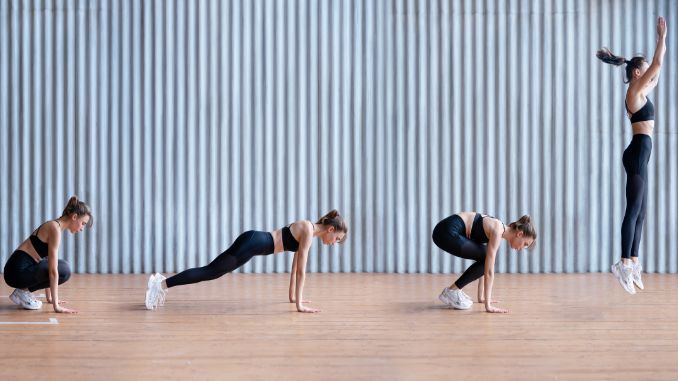
- Begin in an upright standing position with your feet shoulder-width apart, maintaining good alignment in your head, shoulders, hips, and legs.
- Bend your knees and hinge at your hips to lower both hands.
- Jump back with both feet into a straight-arm plank position, keeping your body aligned.
- Bend your elbows to lower your chest and thighs to the floor, then push back to a straight-arm plank.
- Hop forward with both feet to return to standing, then jump up with your arms raised overhead.
- Repeat the sequence for the desired number of repetitions.
11. Full Snatch
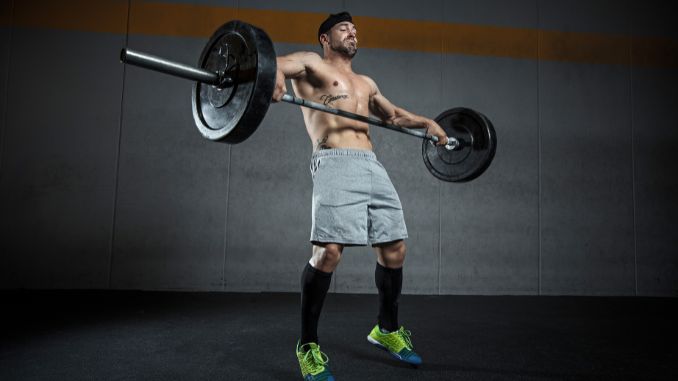
- Begin in an upright standing position with your feet slightly wider than shoulder-width apart, maintaining good alignment in your head, shoulders, hips, and legs.
- Hold a dumbbell or kettlebell in one hand in front of your body.
- Engage your core hinge at your hips and bend your knees to swing the weight backward between your legs.
- Thrust your hips forward powerfully as you return to standing, swinging the weight upward to head height.
- Continue moving by pressing the weight overhead until your arm is fully extended.
- Lower the weight back to the starting position with control and repeat the movement five times.
- Switch the weight to your opposite hand and repeat for five repetitions.
Benefits and Risks of Cross-Training Workouts

1. Full-Body Fitness: Cross-training [¹] works your entire body, giving you a balanced workout that targets multiple muscle groups.
2. Injury Prevention: Famous Physical Therapists Bob Schrupp and Brad Heineck stress that cross-training reduces injury risk by preventing overuse of muscles and joints. Mixing up exercises boosts performance and helps endurance athletes enhance fitness without overtraining.
3. Boredom Buster: Say goodbye to monotony! Cross-training keeps things interesting with a variety of movements.
4. Mental Boost: Variety isn’t just good for your body; it keeps your mind engaged and motivated.
Risks and Injury Prevention
1. Overtraining: Jumping into too much too soon can lead to burnout or injury. Start at your level and progress gradually.
2. Improper Form: Some exercises require good technique. If in doubt, take it slow or consult a trainer.
Strength Training: The Foundation of Cross Training
Strength training is vital to cross-training because it complements other workout elements by improving overall fitness, preventing injuries, and enhancing performance. It targets major muscle groups—upper body, lower body, and core—creating a balanced and resilient physique.
Incorporating exercises like push-ups, pull-ups, and single-leg squats bridges the gap between strength and functionality. Push-ups build upper body strength, pull-ups enhance back, and biceps, and single-leg squats improve lower body stability and strength, directly reducing the risk of overuse injuries. Together, these exercises boost muscle power and endurance while supporting injury prevention.
Strength training also improves cardiovascular fitness, as it challenges your body in ways that build both stamina and muscle. Furthermore, it increases bone density, reducing the risk of fractures and osteoporosis—a long-term benefit that enhances overall health. Integrating strength training into your cross-training routine will build a stronger body and lay the foundation for long-term athletic performance and injury resilience.
How Often Should You Cross-Train?
The frequency of cross-training depends on your fitness level and goals. Here’s a simple guide:
- Beginners: Start with 2–3 weekly sessions alongside your usual routine.
- Intermediate/Advanced: Go for 4–5 sessions weekly, mixing in rest days for recovery.
Sample Weekly Schedule:
- Monday: Strength training (e.g., Bodyweight Rows, Dumbbell Swings)
- Wednesday: Cardio-based cross-training (e.g., Touch Jumps, Burpees)
- Friday: Combination workout (e.g., Weighted Step-Ups, Dumbbell Thrusters)
How to Start Cross-Training?
- Assess Your Fitness Level: Identify where you stand—beginner, intermediate, or advanced.
- Pick Your Exercises: Choose movements that complement your current routine and target different muscle groups.
- Start Slow: Begin with a manageable duration or intensity and progress as you adapt.
- Track Your Progress: Keep a log of your workouts to monitor improvement.
- Listen to Your Body: Take breaks when needed and focus on proper form to avoid injuries.
Injury Prevention and Rehabilitation
Injury prevention is essential for any cross-training program. Focus on exercises that strengthen injury-prone areas like the knees, hips, and lower back to enhance performance and reduce risk. Aerobic activities [³] like cycling or swimming improve cardiovascular fitness while minimizing strain, and core-strengthening moves like push-ups and pull-ups boost stability.
Common Mistakes in Cross-Training
(and How to Avoid Them)

Cross-training is an amazing way to enhance your fitness, but like any workout routine, common pitfalls can hold you back or lead to injury. Here’s what to watch out for and how to avoid these mistakes like a pro:
1. Overtraining Without Rest Days
It’s tempting to go all-in when you’re excited about a new routine, but overtraining can lead to burnout, fatigue, or even injuries. Your body needs time to recover and rebuild stronger after each session.
Tip: Schedule at least 1–2 rest days per week. Use these days for light activities like stretching, walking, or yoga to keep your body active while giving it time to recover.
2. Ignoring Proper Form
Even the best exercises can be harmful if done incorrectly. Poor form reduces the effectiveness of your workout and increases the risk of injury, especially during moves like burpees or weighted swings.
Tip: Focus on quality over quantity. Slow down, start with lighter weights or easier variations, and prioritize mastering the correct technique. If you’re unsure, consider consulting a trainer or watching tutorials.
3. Skipping Warm-Ups and Cool-Downs
Jumping straight into intense exercises without warming up is like trying to drive a cold car—it’s inefficient and can strain your body. Similarly, skipping cool-downs can leave your muscles tight and sore.
Tip: Dedicate 5–10 minutes before your workout for a dynamic warm-up (e.g., arm circles, leg swings, or light jogging). Afterward, stretch the major muscle groups you’ve worked to enhance recovery and reduce soreness.
By avoiding these common mistakes, you’ll get better results and ensure your cross-training journey is safe, effective, and enjoyable. Remember, fitness is a marathon, not a sprint—take it step by step, and your body will thank you!
Conclusion
Cross-training isn’t just another workout—it’s your ticket to breaking plateaus, staying motivated, and becoming stronger than ever. These 11 workouts are designed to challenge you at every level, so whether you’re just starting or a seasoned pro, there’s something here for you.
So, what are you waiting for? Try these workouts, and who knows—you might just become the person who runs upstairs for fun. (Okay, maybe not fun, but you’ll crush it!) In the comments below, let me know your favorite, or share your progress. Let’s keep moving forward together!
Ready to take your fitness journey to the next level? Check out our 7-Minute Workout Bundle designed to help you warm up, work out, and cool down efficiently!
FAQ's
1. Can you build muscle with cross-training?
Yes! Cross-training builds strength, muscle mass, and endurance while burning fat. Its high intensity can trigger the "afterburn effect," helping you burn calories even after your workout.
2. Does lifting count as cross-training?
Yes, lifting is a great form of cross-training. Strength training with weights, bands, or bodyweight builds muscle and complements cardio workouts, though not all cross-training involves strength exercises.
3. Can cross-training really build muscle?
Absolutely. Cross-training uses multiple muscle groups, strengthens bones, and reduces joint strain, making it effective for building muscle and overall physical resilience.
4. Can cross-training enhance weight loss?
Yes, cross-training boosts calorie burn, supports fitness, reduces injury risk, and keeps workouts exciting—helping you stick to your routine and achieve weight loss goals.
5. How intense should cross-training be?
Cross-training intensity should match your goals. It’s often used for low to moderate recovery workouts but can be adjusted for more challenging sessions.



